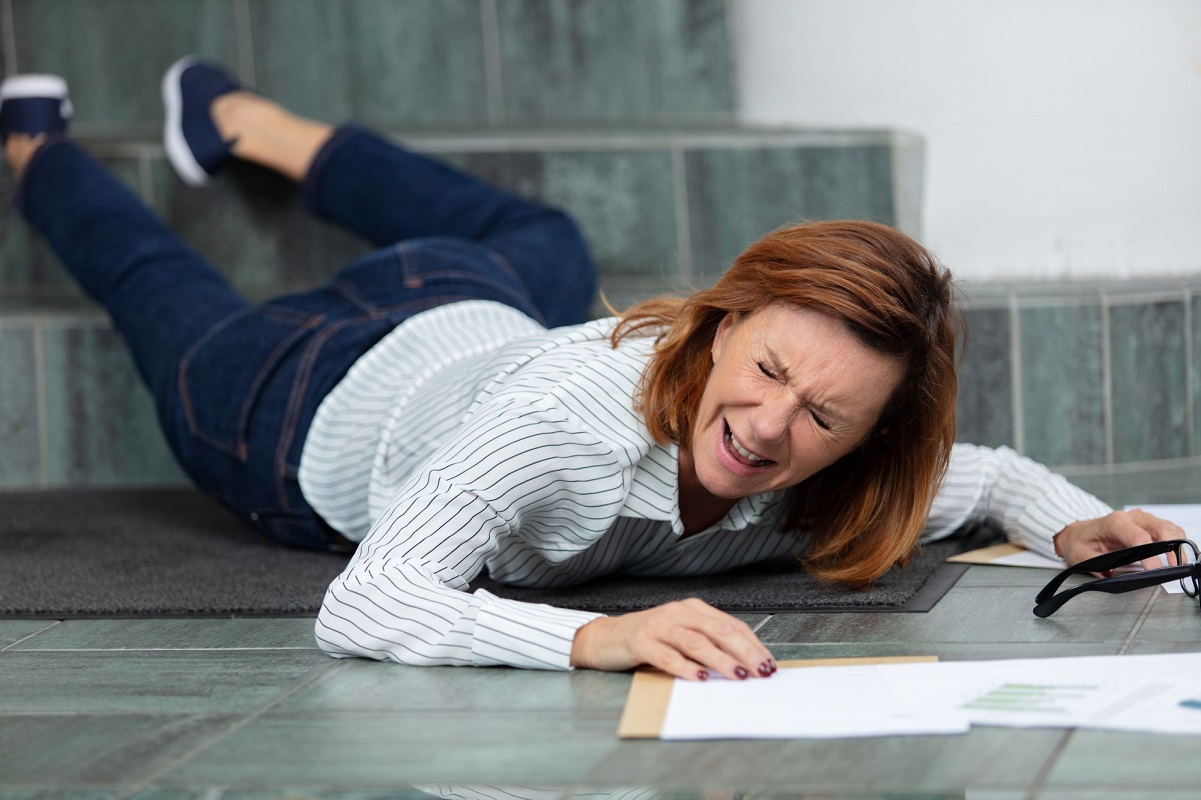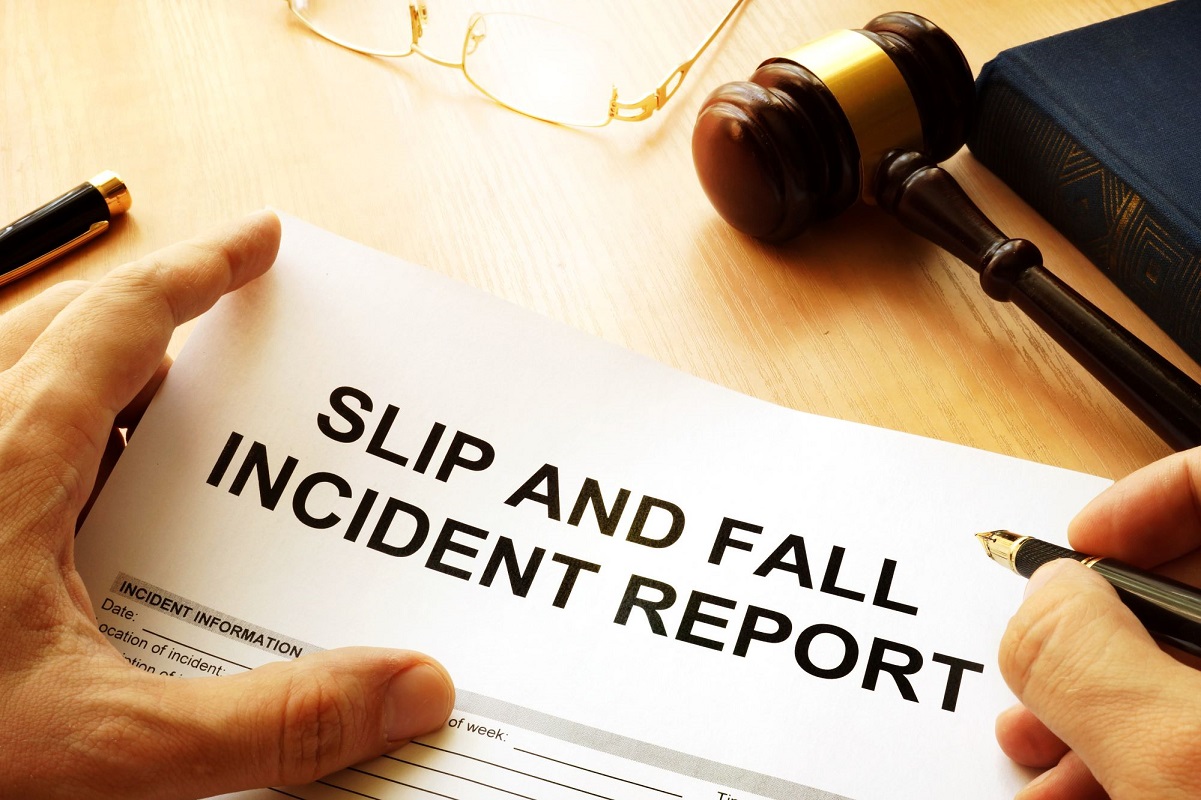Contents of this Post
ToggleSlip and fall accidents are unfortunate incidents that can occur unexpectedly and result in severe injury. They’re characterized by circumstances where an individual sustained an injury due to a dangerous condition on another person’s property. These events can occur in a private residence, a commercial establishment like a shopping mall or restaurant, public spaces like sidewalks and parks, or in a place of employment. Also, the resultant injuries can range from minor bruises and abrasions to more severe outcomes like broken bones, traumatic brain injuries, spinal cord injuries, or even fatalities.

Therefore, it’s crucial for individuals injured in a slip and fall accident to understand the legal framework surrounding these accidents, particularly in establishing liability. However, knowing who is at fault can be challenging since it’s subject to various laws that vary from state to state. In this case, a knowledgeable lawyer can guide you through this complex process and help ascertain your legal rights.
This article sheds light on liability in slip and fall accidents and a lawyer’s crucial role in these cases. Read on to learn more.
Different Types Of Liability
Before delving deeper into the subject, it’s essential to understand the different types of liability associated with slip and fall accidents. These categories help determine who may be at fault. The various types include:
- Negligence: It means the failure to take reasonable care to avoid causing harm to others. In slip and fall accidents, negligence can be found if the property owner or manager fails to take reasonable steps to keep the premises safe for visitors. This could include failing to remove or fix known hazards like wet floors or broken stairs, provide adequate lighting, and keep walkways clear of debris. So, if a property owner or manager is found negligent, they may be liable for the injuries you sustained in the said accident.
- Strict Liability: It holds a person or entity responsible for the harm caused by their actions, even if they didn’t intend to cause damage. In slip and fall cases, a property owner or occupant can be accountable for a visitor’s injuries, even if they didn’t know about the hazard that caused the accident.
- Statutory Liability: It’s a legal principle allowing injured people to recover damages from property owners even if they can’t prove the latter was negligent. This doctrine is based on the premise that property owners must keep their premises safe for all visitors. If they can’t uphold these safety standards and someone has been injured, they can be held accountable for the injuries.
By considering these different types of liability, you can learn how to identify who is at fault for your slip and fall accident. However, it’s best to speak to an experienced legal professional to discuss your legal options. You can check reputable websites like Help Me Mario and other online resources if you need more information.
Elements Of Liability In Slip and Fall Cases
After grasping the basic types of liability, let’s now consider the crucial elements required to establish liability in slip and fall cases. The following are the key elements which you and your lawyer must prove to establish a party’s accountability in a slip and fall case:
- Duty of Care: The plaintiff must demonstrate that the defendant owed them a duty of care. They can do this by showing that the property owners have a legal obligation to maintain their property’s safety for visitors.
- Breach of Duty: A breach of duty occurs when the property owner fails to meet the standard of care required. For example, if a hazardous condition on the property was known or should’ve been known by a reasonable person, and no corrective action was taken, this may constitute a breach of duty.
- Causation: Merely proving that a hazardous condition existed isn’t sufficient. The plaintiff must also establish that this condition directly caused their injuries. That is, the accident wouldn’t have occurred if it wasn’t for the dangerous condition in someone else’s property
These are the crucial elements that you and your lawyer should keep in mind to establish liability. On the other hand, simply demonstrating these factors isn’t sufficient to hold the alleged at-fault party liable for the slip and fall accident. To prove your case, you need to submit evidence such as:
- Medical records
- Photographs and videos from the scene
- Witness statements
- Expert testimonies from specialists
These pieces of evidence can help your lawyer establish the other party’s liability and calculate the compensation you may be entitled to for the damages caused by your injury.
Comparative And Contributory Negligence
With an understanding of liability types and key elements, let’s now explore some complexities within these concepts, such as comparative and contributory negligence. These legal doctrines can reduce or even eliminate a plaintiff’s ability to recover compensation if they’re partly or wholly at fault for their injuries.
Under the comparative negligence doctrine, if the plaintiff is partially liable, the damages awarded will be reduced in proportion to their share of the blame. For example, if a jury finds that the plaintiff was 20% at fault, they will only recover 80% of the damages.
On the other hand, contributory negligence is a stricter doctrine followed in some states. It emphasizes that when the plaintiff is found to be even slightly at fault, they may be barred from recovering any damages.
Therefore, knowing and applying these doctrines require the expertise of a seasoned lawyer who can explain their implications to clients.
Conclusion
Given these intricacies in liability determination, it becomes evident how crucial professional legal guidance is. An experienced lawyer can be an invaluable ally. They can help victims understand their rights and guide them towards the best possible outcome.
Furthermore, if you’ve been injured in a slip and fall accident, it’s important to keep the information mentioned above in mind. This knowledge can help you better understand the concept of liability with the assistance of your lawyer.

